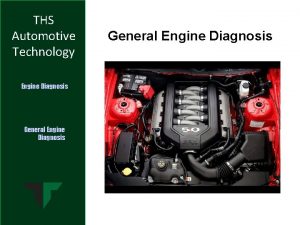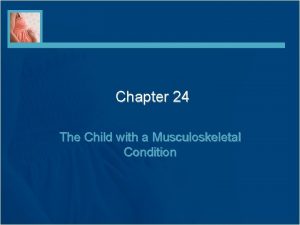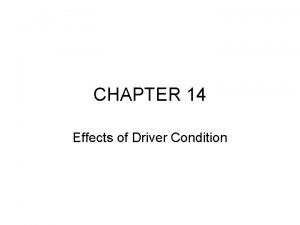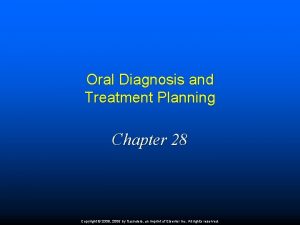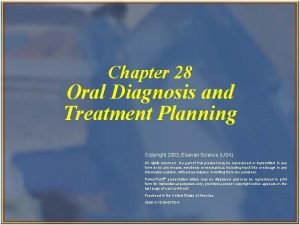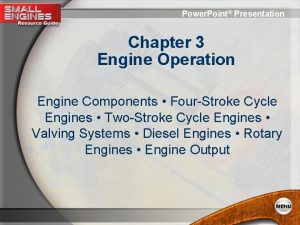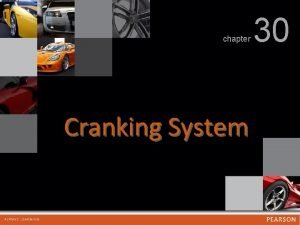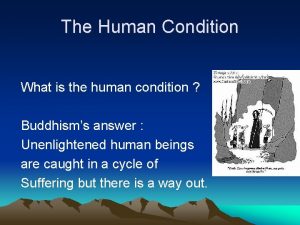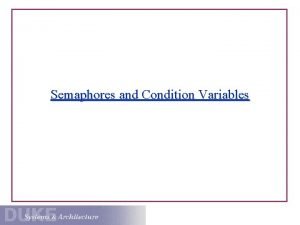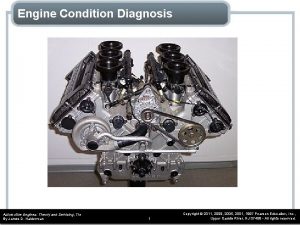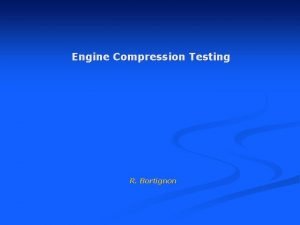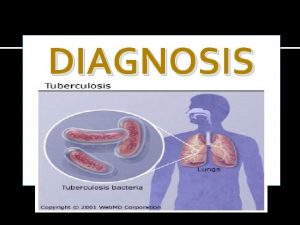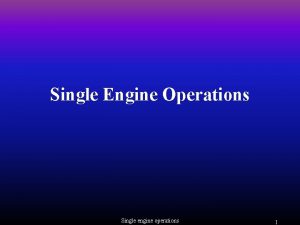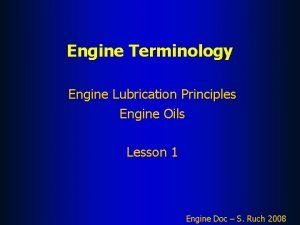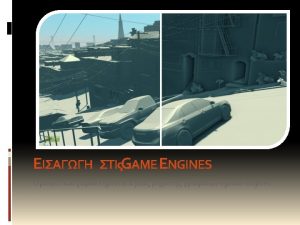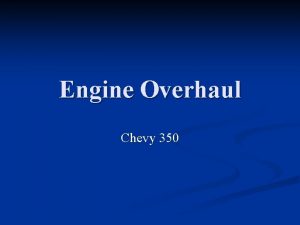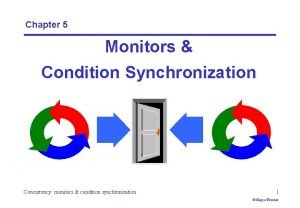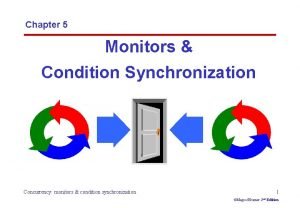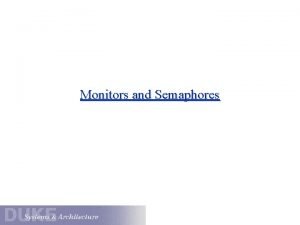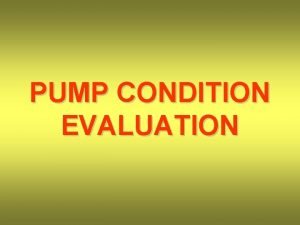chapter Engine Condition Diagnosis 20 chapter 20 Engine











































- Slides: 43

chapter Engine Condition Diagnosis 20

chapter 20 Engine Condition Diagnosis FIGURE 20. 1 Blowby gases coming out of the crankcase vent hose. Excessive amounts of combustion gases flow past the piston rings and into the crankcase.

chapter 20 Engine Condition Diagnosis FIGURE 20. 2 White steam is usually an indication of a blown (defective) cylinder head gasket that allows engine coolant to flow into the combustion chamber where it is turned to steam.

chapter 20 Engine Condition Diagnosis CHART 20. 1

chapter 20 Engine Condition Diagnosis FIGURE 20. 3 What looks like an oil pan gasket leak can be a rocker cover gasket leak. Always look up and look for the highest place you see oil leaking; that should be repaired first.

chapter 20 Engine Condition Diagnosis FIGURE 20. 4 The transmission and flexplate (flywheel) were removed to check the exact location of this oil leak. The rear main seal and/or the oil pan gasket could be the cause of this leak.

chapter 20 Engine Condition Diagnosis FIGURE 20. 5 Using a black light to spot leaks after adding dye to the oil.

chapter 20 Engine Condition Diagnosis FIGURE 20. 6 An accessory belt tensioner. Most tensioners have a mark that indicates normal operating location. If the belt has stretched, this indicator mark will be outside of the normal range. Anything wrong with the belt or tensioner can cause noise.

chapter 20 Engine Condition Diagnosis CHART 20. 2

chapter 20 Engine Condition Diagnosis FIGURE 20. 7 A cracked exhaust manifold on a Ford V-8.

chapter 20 Engine Condition Diagnosis FIGURE 20. 8 To measure engine oil pressure, remove the oil pressure sending (sender) unit usually located near the oil filter. Screw the pressure gauge into the oil pressure sending unit hole.

chapter 20 Engine Condition Diagnosis FIGURE 20. 9 The paper test involves holding a piece of paper near the tailpipe of an idling engine. A good engine should produce even, outward puffs of exhaust. If the paper is sucked in toward the tailpipe, a burned valve is a possibility.

chapter 20 Engine Condition Diagnosis FIGURE 20. 10 A two-piece compression gauge set. The threaded hose is screwed into the spark plug hole after removing the spark plug. The gauge part is then snapped onto the end of the hose.

chapter 20 Engine Condition Diagnosis FIGURE 20. 11 Use a vacuum or fuel line hose over the spark plug to install it without danger of cross-threading the cylinder head.

chapter 20 Engine Condition Diagnosis FIGURE 20. 12 Badly burned exhaust valve. A compression test could have detected a problem, and a cylinder leakage test (leak-down test) could have been used to determine the exact problem.

chapter 20 Engine Condition Diagnosis FIGURE 20. 13 A typical handheld cylinder leakage tester.

chapter 20 Engine Condition Diagnosis FIGURE 20. 14 A whistle stop used to find top dead center. Remove the spark plug and install the whistle stop, then rotate the engine by hand. When the whistle stops making a sound, the piston is at the top.

chapter 20 Engine Condition Diagnosis FIGURE 20. 15 Using a vacuum hose and a test light to ground one cylinder at a time on a distributorless ignition system. This works on all types of ignition systems and provides a method for grounding out one cylinder at a time without fear of damaging any component. To avoid possible damage to the catalytic converter, do not short out a cylinder for longer than five seconds.

chapter 20 Engine Condition Diagnosis FIGURE 20. 16 An engine in good mechanical condition should produce 17 to 21 inches Hg of vacuum at idle at sea level.

chapter 20 Engine Condition Diagnosis FIGURE 20. 17 A steady but low reading could indicate retarded valve or ignition timing.

chapter 20 Engine Condition Diagnosis FIGURE 20. 18 A gauge reading with the needle fluctuating 3 to 9 inches Hg below normal often indicates a vacuum leak in the intake system.

chapter 20 Engine Condition Diagnosis FIGURE 20. 19 A leaking head gasket can cause the needle to vibrate as it moves through a range from below to above normal.

chapter 20 Engine Condition Diagnosis FIGURE 20. 20 An oscillating needle 1 or 2 inches Hg below normal could indicate an incorrect air– fuel mixture (either too rich or too lean).

chapter 20 Engine Condition Diagnosis FIGURE 20. 21 A rapidly vibrating needle at idle that becomes steady as engine speed is increased indicates worn valve guides.

chapter 20 Engine Condition Diagnosis FIGURE 20. 22 If the needle drops 1 or 2 inches Hg from the normal reading, one of the engine valves is burned or not seating properly.

chapter 20 Engine Condition Diagnosis FIGURE 20. 23 Weak valve springs will produce a normal reading at idle, but as engine speed increases, the needle will fluctuate rapidly between 12 and 24 inches Hg.

chapter 20 Engine Condition Diagnosis FIGURE 20. 24 A steady needle reading that drops 2 or 3 inches Hg when the engine speed is increased slightly above idle indicates that the ignition timing is retarded.

chapter 20 Engine Condition Diagnosis FIGURE 20. 25 A steady needle reading that rises 2 or 3 inches Hg when the engine speed is increased slightly above idle indicates that the ignition timing is advanced.

chapter 20 Engine Condition Diagnosis FIGURE 20. 26 A needle that drops to near zero when the engine is accelerated rapidly and then rises slightly to a reading below normal indicates an exhaust restriction.

chapter 20 Engine Condition Diagnosis FIGURE 20. 27 A technician-made adapter used to test exhaust system back pressure.

chapter 20 Engine Condition Diagnosis FIGURE 20. 28 A tester that uses a blue liquid to check for exhaust gases in the exhaust, which would indicate a head gasket leak problem.

chapter 20 Engine Condition Diagnosis UNFIGURE 20. 01 The tools and equipment needed to perform a compression test include a compression gauge, an air nozzle, and the socket ratchets and extensions that may be necessary to remove the spark plugs from the engine.

chapter 20 Engine Condition Diagnosis UNFIGURE 20. 02 To prevent ignition and fuel-injection operation while the engine is being cranked, remove both the fuel-injection fuse and the ignition fuse. If the fuses cannot be removed, disconnect the wiring connectors for the injectors and the ignition system.

chapter 20 Engine Condition Diagnosis UNFIGURE 20. 03 Block open the throttle (and choke, if the engine is equipped with a carburetor). Here a screwdriver is being used to wedge throttle linkage open. Keeping the throttle open ensures that enough air will be drawn into the engine so that the compression test results will be accurate.

chapter 20 Engine Condition Diagnosis UNFIGURE 20. 04 Before removing the spark plugs, use an air nozzle to blow away any dirt that may be around the spark plug. This step helps prevent debris from getting into the engine when the spark plugs are removed.

chapter 20 Engine Condition Diagnosis UNFIGURE 20. 05 Remove all of the spark plugs. Be sure to mark the spark plug wires so that they can be reinstalled onto the correct spark plugs after the compression test has been performed.

chapter 20 Engine Condition Diagnosis UNFIGURE 20. 06 Select the proper adapter for the compression gauge. The threads on the adapter should match those on the spark plug.

chapter 20 Engine Condition Diagnosis UNFIGURE 20. 07 If necessary, connect a battery charger to the battery before starting the compression test. It is important that consistent cranking speed be available for each cylinder being tested.

chapter 20 Engine Condition Diagnosis UNFIGURE 20. 08 Make a note of the reading on the gauge after the first “puff, ” which indicates the first compression stroke that occurred on that cylinder as the engine was being rotated. If the first puff reading is low and the reading gradually increases with each puff, weak or worn piston rings may be indicated.

chapter 20 Engine Condition Diagnosis UNFIGURE 20. 09 After the engine has been cranked for four “puffs, ” stop cranking the engine and observe the compression gauge.

chapter 20 Engine Condition Diagnosis UNFIGURE 20. 10 Record the first puff and this final reading for each cylinder. The final readings should all be within 20% of each other.

chapter 20 Engine Condition Diagnosis UNFIGURE 20. 11 If a cylinder(s) is lower than most of the others, use an oil can and use two squirts of engine oil into the cylinder and repeat the compression test. This is called performing a wet compression test.

chapter 20 Engine Condition Diagnosis UNFIGURE 20. 12 If the gauge reading is now much higher than the first test results, then the cause of the low compression is due to worn or defective piston rings. The oil in the cylinder temporarily seals the rings, which causes the higher reading.
 Geometrical symbols
Geometrical symbols Types of nursing diagnosis
Types of nursing diagnosis Medical diagnosis and nursing diagnosis difference
Medical diagnosis and nursing diagnosis difference Nursing diagnosis three parts
Nursing diagnosis three parts Objectives of nursing process
Objectives of nursing process Perbedaan diagnosis gizi dan diagnosis medis
Perbedaan diagnosis gizi dan diagnosis medis General engine diagnosis
General engine diagnosis Internal combustion vs external combustion
Internal combustion vs external combustion Chapter 30 the child with a skin condition
Chapter 30 the child with a skin condition Chapter 29 the child with a genitourinary condition
Chapter 29 the child with a genitourinary condition Chapter 29 the child with a genitourinary condition
Chapter 29 the child with a genitourinary condition Chapter 6 effects of driver condition
Chapter 6 effects of driver condition Chapter 24 the child with a musculoskeletal condition
Chapter 24 the child with a musculoskeletal condition Chapter 14 effects of driver condition
Chapter 14 effects of driver condition Chapter 27 the child with a condition of the blood
Chapter 27 the child with a condition of the blood Chapter 30 the child with a skin condition
Chapter 30 the child with a skin condition Chapter 30 the child with a skin condition
Chapter 30 the child with a skin condition Chapter 30 the child with a skin condition
Chapter 30 the child with a skin condition Chapter 28 oral diagnosis and treatment planning
Chapter 28 oral diagnosis and treatment planning Chapter 81 brake system technology answers
Chapter 81 brake system technology answers Modified macpherson strut
Modified macpherson strut Chapter 42 gasoline injection diagnosis and repair
Chapter 42 gasoline injection diagnosis and repair Oral diagnosis and treatment planning ppt
Oral diagnosis and treatment planning ppt Engine operation chapter 3 test 1
Engine operation chapter 3 test 1 Chapter 30 engine starting systems
Chapter 30 engine starting systems Chapter 5 two-cycle and four-cycle engines answers
Chapter 5 two-cycle and four-cycle engines answers Pa state inspection checklist form
Pa state inspection checklist form Unsafe act and unsafe condition ppt
Unsafe act and unsafe condition ppt Condition coverage
Condition coverage Class diagram if condition
Class diagram if condition Variable abbreviation
Variable abbreviation Hunger games chapter 14 questions and answers
Hunger games chapter 14 questions and answers What are 4 noble truths
What are 4 noble truths Army class task, conditions and standards
Army class task, conditions and standards What clever strategy does foxface employ at the feast
What clever strategy does foxface employ at the feast Semapohore
Semapohore Maximum material limit
Maximum material limit Race condition in os
Race condition in os Race condition vulnerability example
Race condition vulnerability example Standard condition for gas
Standard condition for gas Unreal conditionals examples
Unreal conditionals examples Second condition of equilibrium
Second condition of equilibrium Umich.edu
Umich.edu Classical vs operant conditioning
Classical vs operant conditioning






